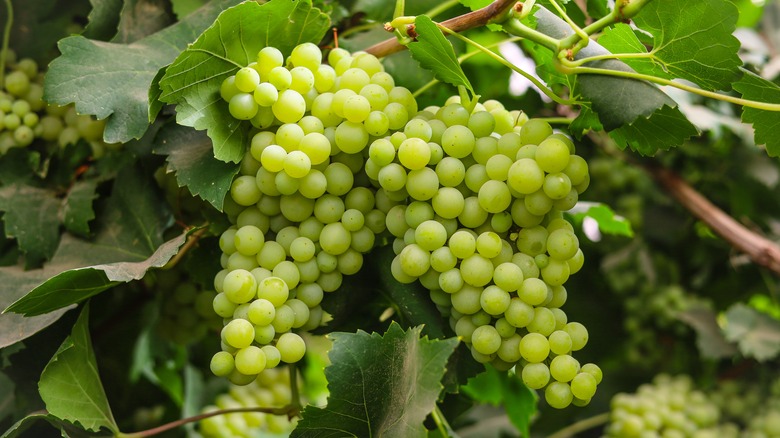What That Low Calorie Wine Label May Really Be Indicating
While carbs may have taken over the spotlight from calories when it comes to those consciously keeping track of what they're consuming, the idea of a lighter source of wine — in whatever form that may take — probably appeals to any health-focused vino lover. Wine often gets a bad rap as being "empty calories" and "full of sugar," so any label indicating otherwise may sway your liquor store purchasing behavior.
If wellness and weight loss and wine sound like a winning trio to you, there is a bit of a loophole worth exploring: low calorie wine. But how exactly does a wine go from high to low calorie and earn that label? After all, a calorie is simply a measurement for a unit of energy in food. If wine is made from mostly water and grapes, how do winemakers reduce the number of calories in the fermented juice of those grapes?
Much like how a sugary can of soda earns the "diet" or "zero" title when the sugar is removed and replaced with a low- or no-calorie sweetener, in order for a bottle of wine to don the low-calorie label, something is removed — it's not exactly the same as your favorite bottle, just with a lower calorie count. So what's really going on with this wine?
Lower calorie means lower alcohol
There are two main sources of calories in wine — alcohol and sugar — and of these, alcohol makes up the greater percentage of calories. The sugar present in wine is from the natural sugars from the leftover grapes that haven't been fermented into alcohol, also known as residual sugar. The higher the alcohol content (that is, the more sugar that has been fermented), the lower the residual sugar — the calories remain either way. But where each gram of sugar has four calories, each gram of alcohol has seven. Thus, the more alcohol in the wine, the higher the calorie count.
Wine grapes from warmer regions with higher sugar content will leave more residual sugar after the fermentation process, therefore producing wine with more calories as you take into account the grams from both the alcohol and the sugar. But low calorie wine is made from grapes with lower sugar content; these grapes are usually found in cooler climates since the grapes don't ripen (sweeten) as much. Less sugar to ferment means less alcohol in the wine — and therefore, fewer calories.
Additionally, wine may be manufactured to get that lower-calorie designation. It can go through a spinning technology process to remove some of the alcohol (and calories) without affecting the flavor and bouquet.
So if watching calories while imbibing is your thing and you're on the lookout for that low-calorie label, remember the correlation between alcohol and calories: lower calorie means lower alcohol content. (Just keep in mind that "low calorie" may be a moot point if you end up drinking more.)

